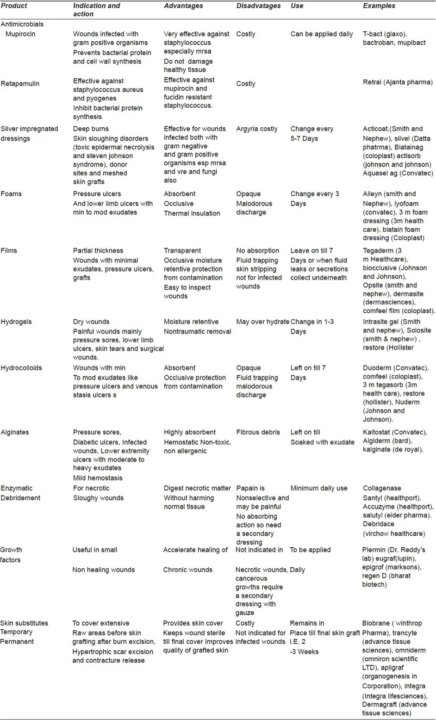A Review of Recent Advances in Wound Care
Wound care is one of the most rapidly changing and dynamic areas of medicine. New products and techniques are emerging all the time, and it is important for the wound care practitioner to keep up to date with advances in wound care in order to be able to continue to offer best current practice. It is important, however, to remember that despite the number of new products emerging every day, the traditional techniques of assessing the wound bed and maintaining a moist wound healing environment remain just as relevant today, and that new and emerging therapeutic modalities should not be treated as a panacea to all wound care issues. This article looks briefly at some of the major recent advances in wound care, from innovative dressings to emerging techniques and modalities.
A number of new wound care products have emerged over recent years. Dressings have advanced to such an extent that they now actively promote wound healing while maintaining a moist wound environment (Table 1). Emerging techniques in debridement include enzymatic debridement, high pressure water irrigation, and biodebridement by medicated larvae which allows selective debridement within two days.
Other advances in wound care include negative pressure wound therapy (NPWT), which is clinically proven to promote active wound healing at the cellular level through negative pressure.
Multiple studies have shown beneficial effect of growth factors either alone or in combination in accelerating healing in chronic wounds, although PDGF and EGF are currently the only topical growth factors approved by the FDA for treatment of chronic wounds.
Biologically active skin substitutes have been used both as dressings, which protect the wound from fluid loss and infection, and as wound implants to prepare the wound bed for permanent skin coverage.
Topical collagen products improve wound healing by establishing a matrix which supports deposition of new tissue and attracts wound healing cells.
Animal studies have shown that topical insulin can promote wound healing by stimulating proliferation and migration of macrophages and keratinocytes in adjacent tissues.
Although the benefit of topical antioxidants such as topical vitamin E on wound healing and scar formation remains inconclusive, some studies have shown improved wound healing with systemic and topical oxygen therapy.
As well as the above products and techniques that are becoming established as advances in wound care, new and emerging strategies include tissue engineering techniques such as use of stem cells and gene therapy for achieving wound closure and offering a potential new regenerative approach in wound therapy.
Learn More With Our Wound Care Education Options
Interested in learning more about wound care and certification? Browse through our wound care certification courses for information on our comprehensive range of education options to suit healthcare professionals across the full spectrum of qualifications and experience.
Table 1. Classification and Characteristics of Newer Wound Care Products
Reproduced from Sarabahi S. Recent advances in topical wound care. Indian J Plast Surg. 2012; 45(2): 379–387.


God Blessyou.
Thank you for these wound care new products.I’m going to share it with my students. I’LL like to know how I can become an ostomy continence specialist.I live inPuerto Rico.
Hi Maggie, WoundEducators.com provides extensive training for wound care certification. We cover peri-stomal skin complications in our course. if you wish to be certified in ostomy care visit the WOCNNB for further information.
Great update, your posts have been really useful to my practice as well as providing up to date wound care and medical information for our trainees, thanks!
Great post I was checking continuously this weblog and I am impressed extremely helpful. I care for such info a lot. I was looking for this particular information for very long time. Thank you and good luck